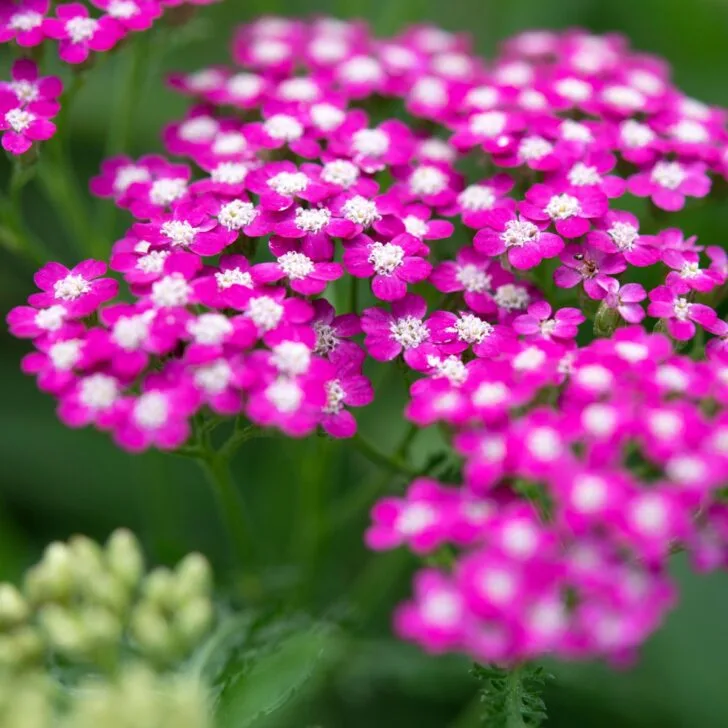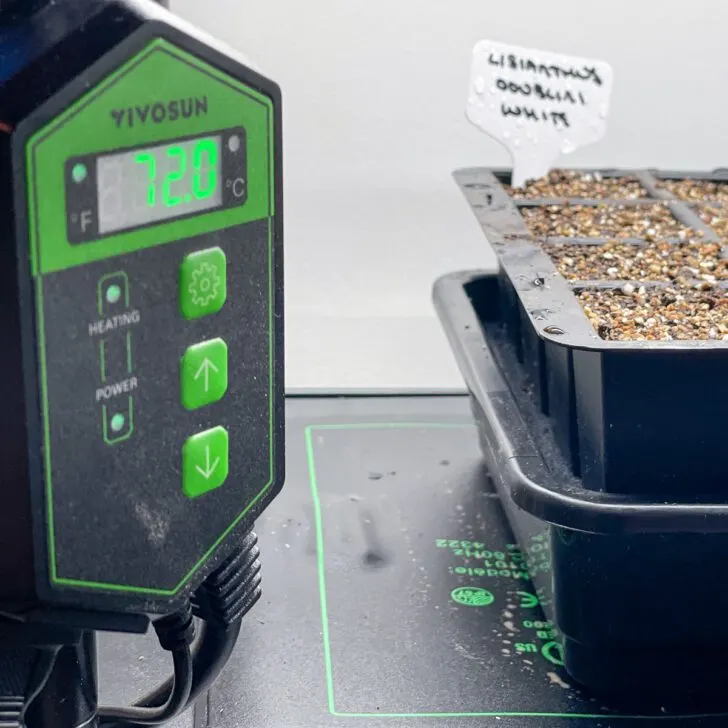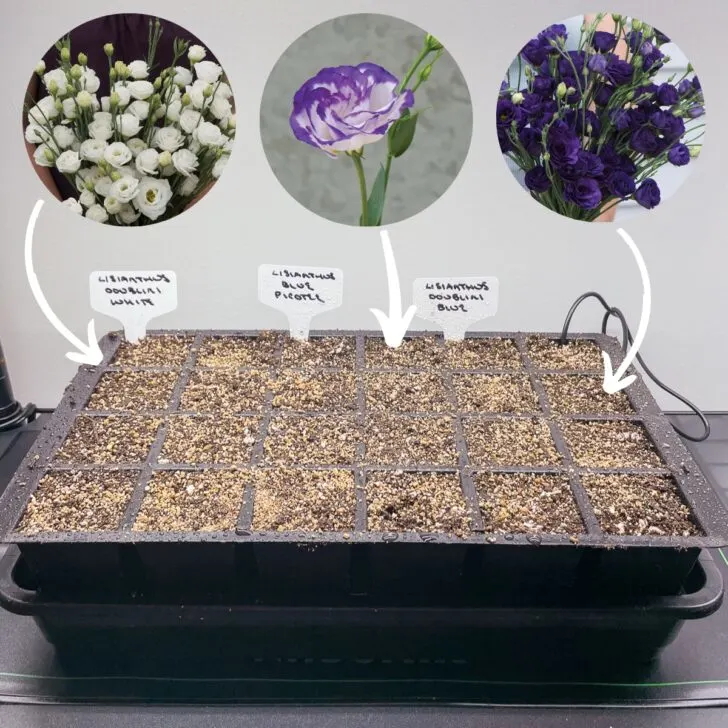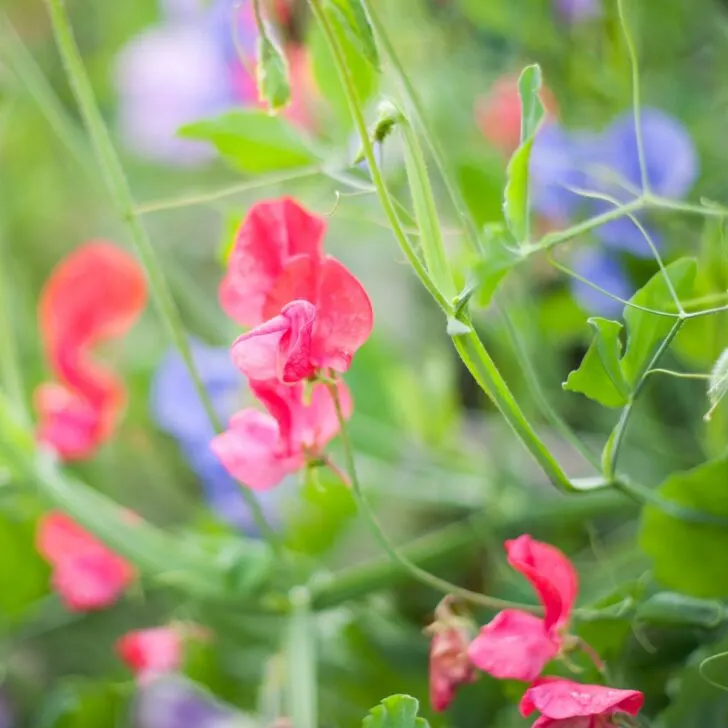Snapdragons are a popular annual flower that brings lots of color to the garden in late spring. Learn how to grow snapdragons from seed!

There's something magical about snapdragons. Their flowers look like tiny jaws, giving the plant its name. They grow tall and straight, with spikes covered in blooms that emit a wonderful scent. What's not to love?
I've popped them into the center of containers for a tall thriller accent, and planted shorter varieties along my garden borders. Instead of spending a ton of money on potted plants from the garden center this year, I'm starting snapdragons from seed!
I've chosen three different varieties in shades of pink, apricot and orange for a colorful display of sunrise colors in the garden. These plants can grow 3-4 feet tall, and will look beautiful behind the late blooming tulips this spring.
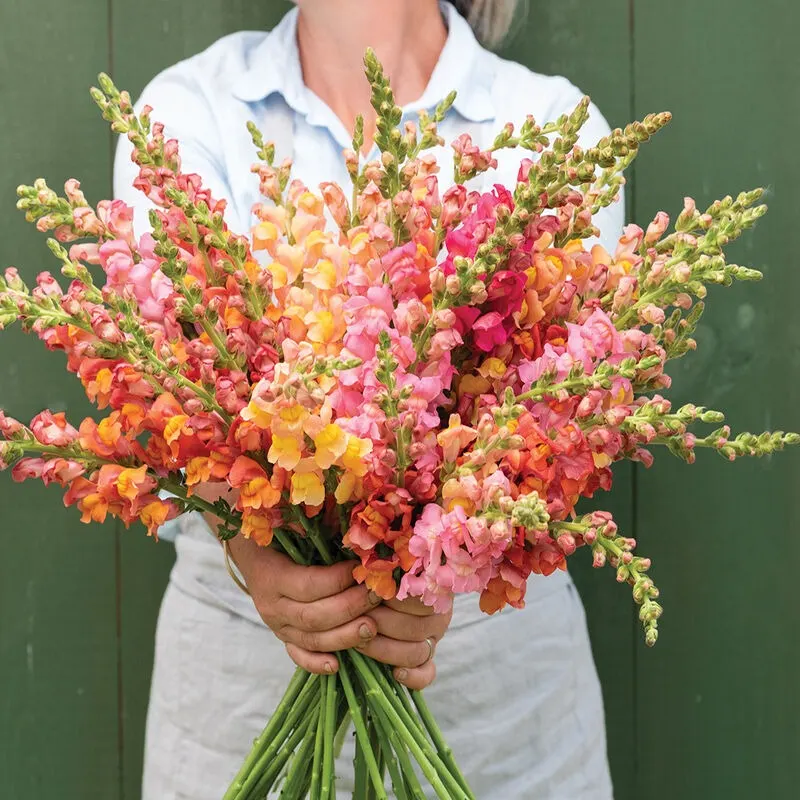
Snapdragon seeds should be started indoors in late winter or early spring, so the flowers can bloom before the hot weather sets in. Snapdragon plants fade in the summer heat, but can rebloom when the temperatures drop as long as you deadhead the spent blooms before they set seed.
This post contains affiliate links for your convenience. Purchases made through these links may earn me a small commission at no additional cost to you.
Snapdragon Varieties
The numerous snapdragon cultivars vary in mature size, flower color, petal structure, and leaf color. Some plants are low-growing dwarfs, others are trailing, and many have mid-sized or tall stems that make them excellent as cut flowers.

Here are a few of the many cultivars you can find.
- ‘Fruit Salad’ is a trailing type that looks amazing in hanging baskets.
- ‘Admiral’ is an extra-early bloomer on 3 to 4-foot tall stems that might need staking.
- ‘Black Prince’ has dark green leaves and dark-purple flowers.
- ‘Liberty’ has white, rose, yellow, lavender, and bronze blossoms on mid-sized stems, perfect for cut flower arrangements.
- ‘Magic Carpet’ is a dwarf variety 6 to 12 inches tall.
- ‘Pixie’ has a butterfly-shaped flower rather than the typical dragon jaw.
- ‘Double Azalea’ has double flowers.
- ‘Frosted Flames’ and ‘Bronze Dragon’ have unusual variegated foliage.
Bloom colors include yellow, many shades of pink and red, orange, white, bronze, lavender, and multi-colored, such as ‘Lucky Lips’ with white and purple blossoms. You can also find mixed colors of the same cultivar or seed blends of multiple types with various colors.
I'm starting Potomac Early Sunrise Mix, Potomac Apple Blossom and Costa Apricot from Johnny's Seeds. I bought these packets last year and forgot to plant them, so I'll be adding a few extra seeds to each cell to ensure some will germinate in each square.

How to Plant Snapdragon Seeds
Starting snapdragons from seed is an easy process, but there are a few things to keep in mind before you start.
When to start snapdragon seeds
In colder regions, you should start snapdragon seeds 8-10 weeks before your last average frost date to give your plants plenty of time to grow before the ground thaws. I'm in zone 8b, so I typically wait until the beginning of February so I can plant them out in early April.
If you are in a warm growing zone, starting seeds in late fall or winter is best because spring planting can push the growth phase into weather that is too hot for these cool-weather plants. You can chill your seeds in the fridge for a week before planting to improve germination.
You can also winter sow snapdragon seeds in milk jugs! This "set it and forget it" method is really easy for beginning gardeners and can be started in late fall or winter.
What do snapdragon seeds look like?
Snapdragons seeds are tiny black balls that are difficult to handle individually. I like to pour out the packet into a small bowl, then stick a few to my finger to sprinkle in each cell of the seed tray.
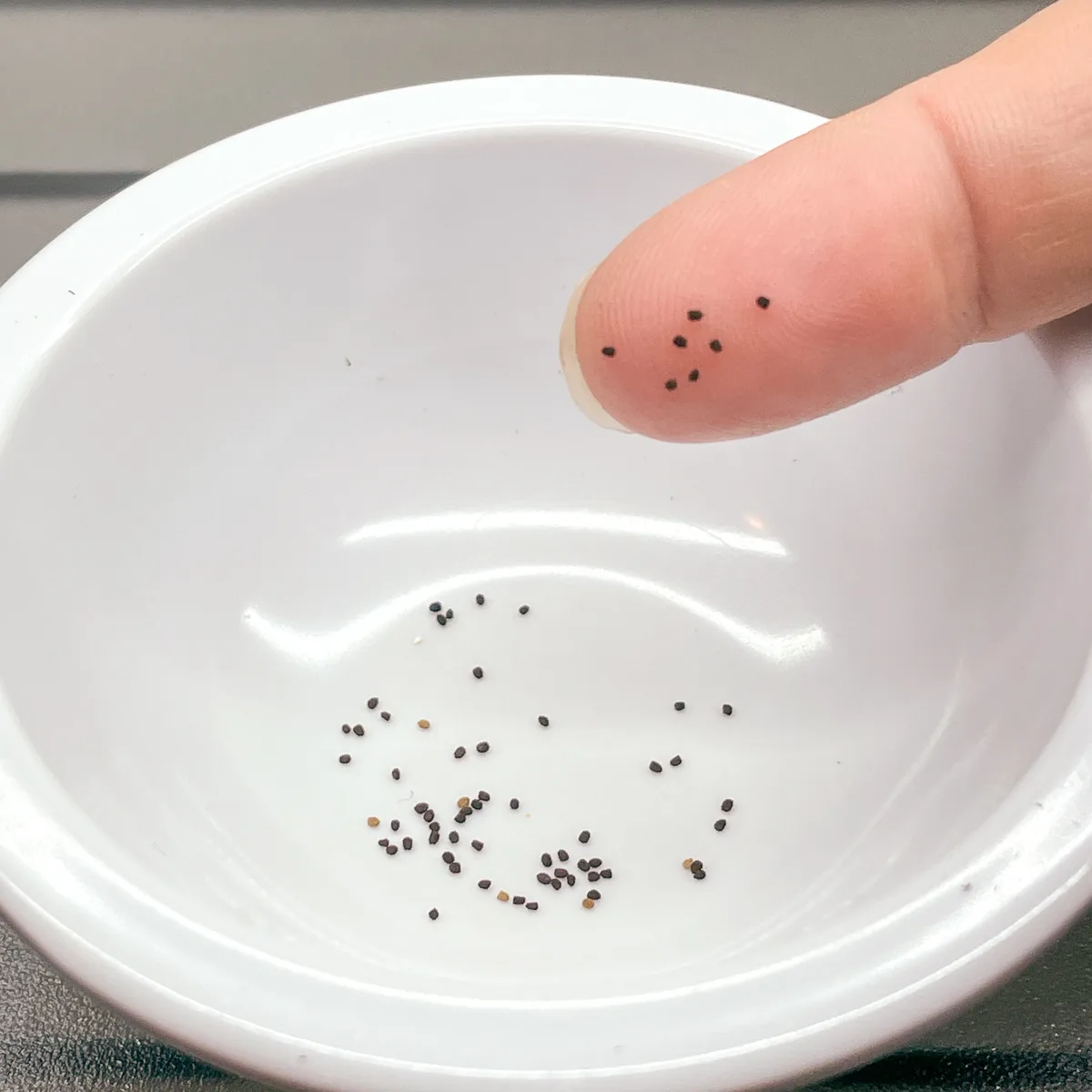
Prepare the soil
Use a good quality seed starting mix, not potting soil. It's specially formulated to be lighter, so the tiny seedlings can push through easily. Mix it with water until it holds its shape when you squeeze it in your hand without any drips.
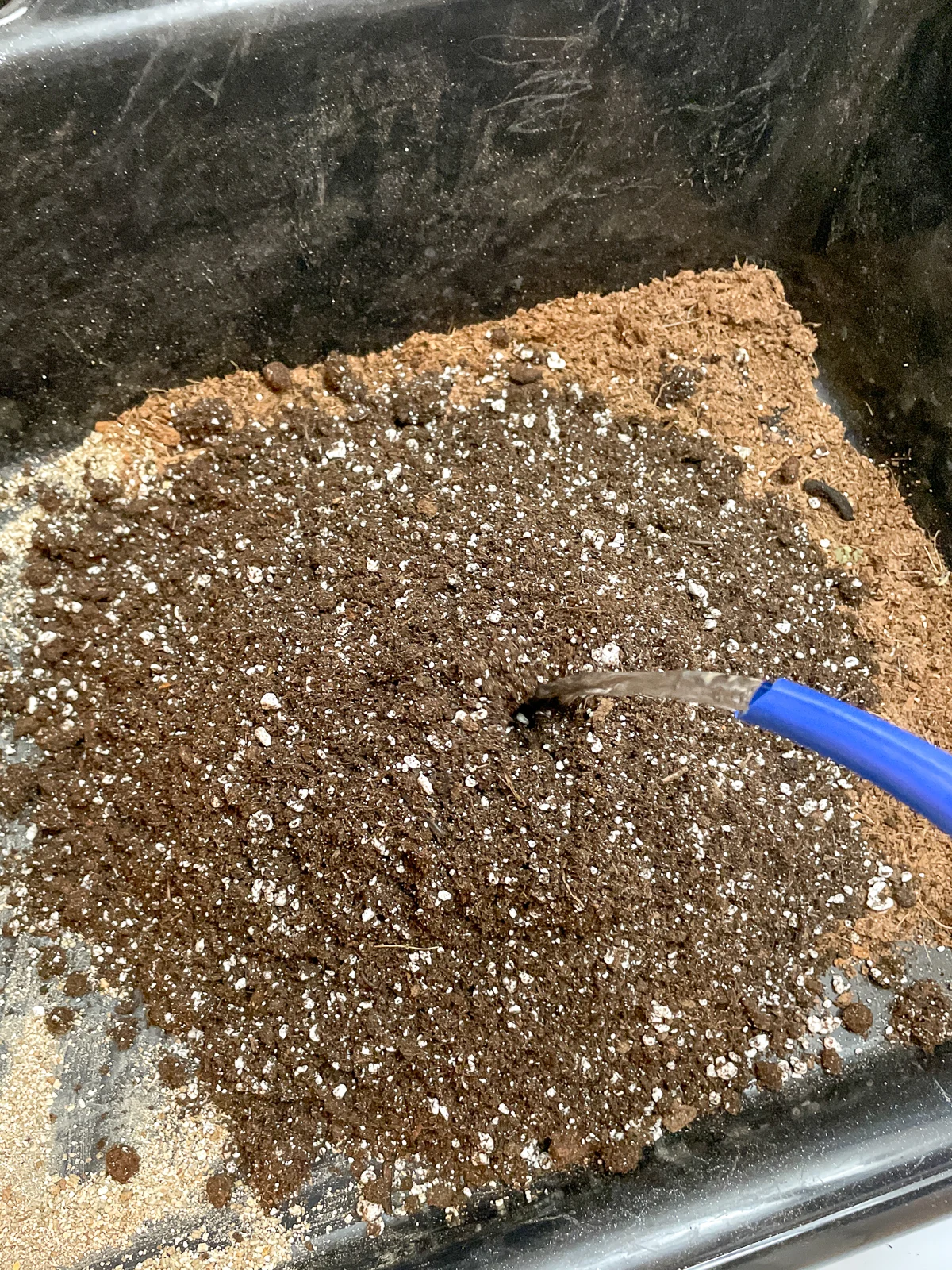
Fill each cell of a clean and sanitized seed tray with soil, then press down lightly to remove air pockets. Top off the tray with more soil as necessary.
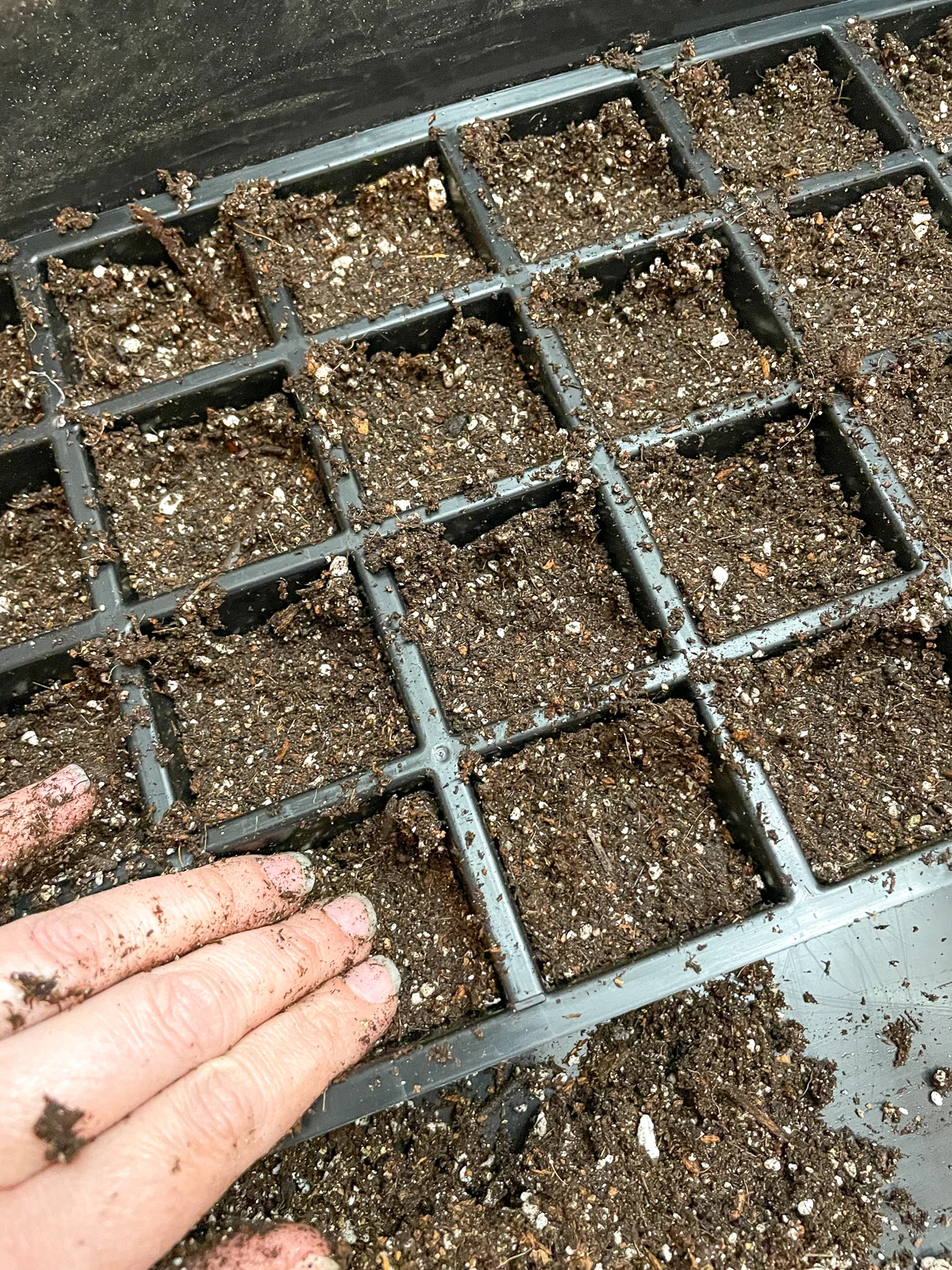
Plant the snapdragon seeds
Snapdragon seeds need light to germinate, so just sprinkle a few seeds per cell on top of the soil. You can add a fine layer of vermiculite over them to help retain moisture, but don't add too much or it could block the light.
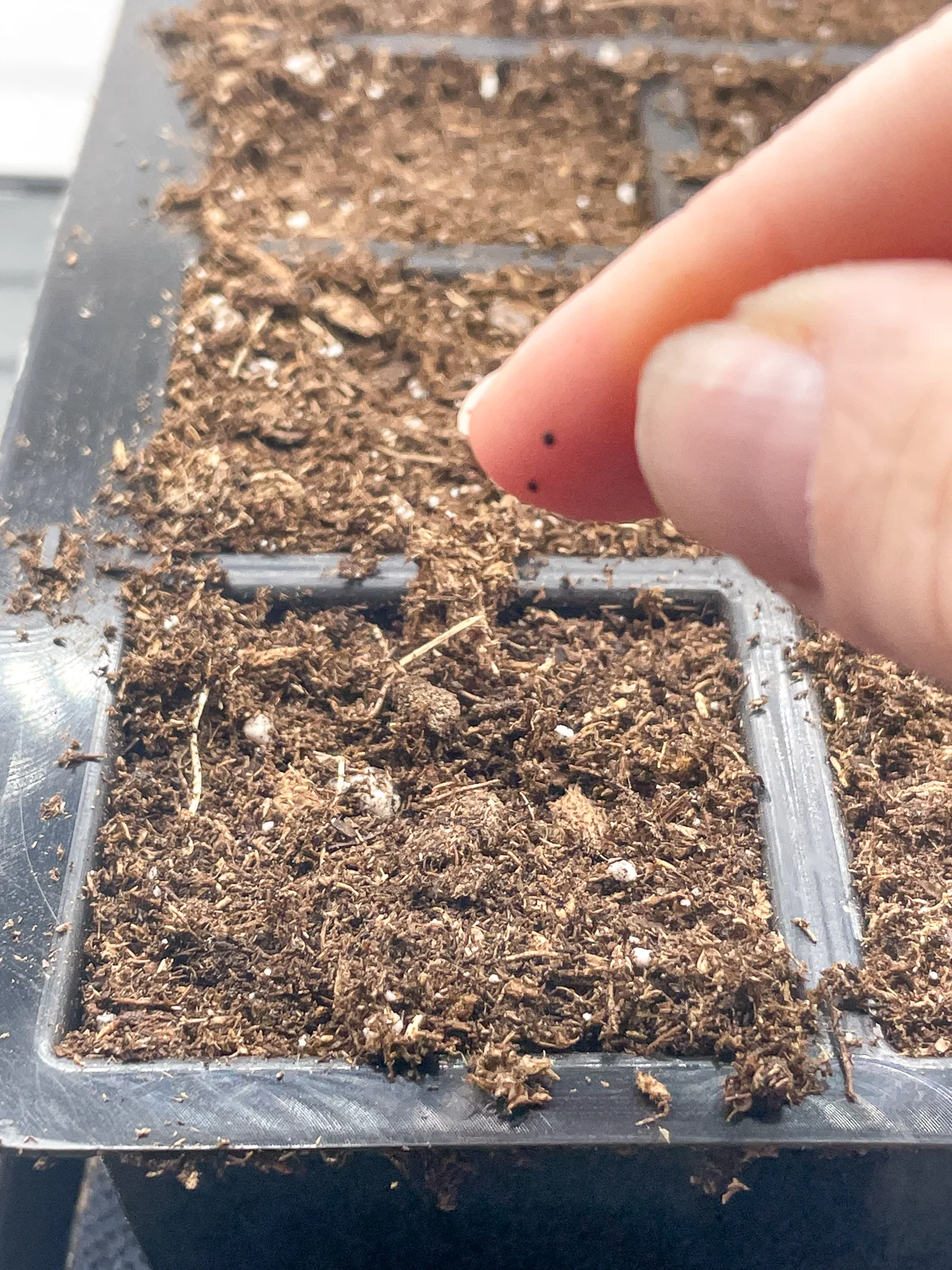
Light, water and temperature requirements
The optimum temperature for snapdragon seed germination is 55 to 70°F, so you do not need to use a heat mat under the seed tray. I keep my grow light shelves in the basement where it stays in the low 60s.
Water the seeds with a fine mist to avoid disturbing them on the soil’s surface. Cover the tray with plastic wrap or a humidity dome to keep the soil moist until the seeds sprout. I'm using GrowEase seed trays that use bottom watering through a wicking mat under the soil so it doesn't dry out.
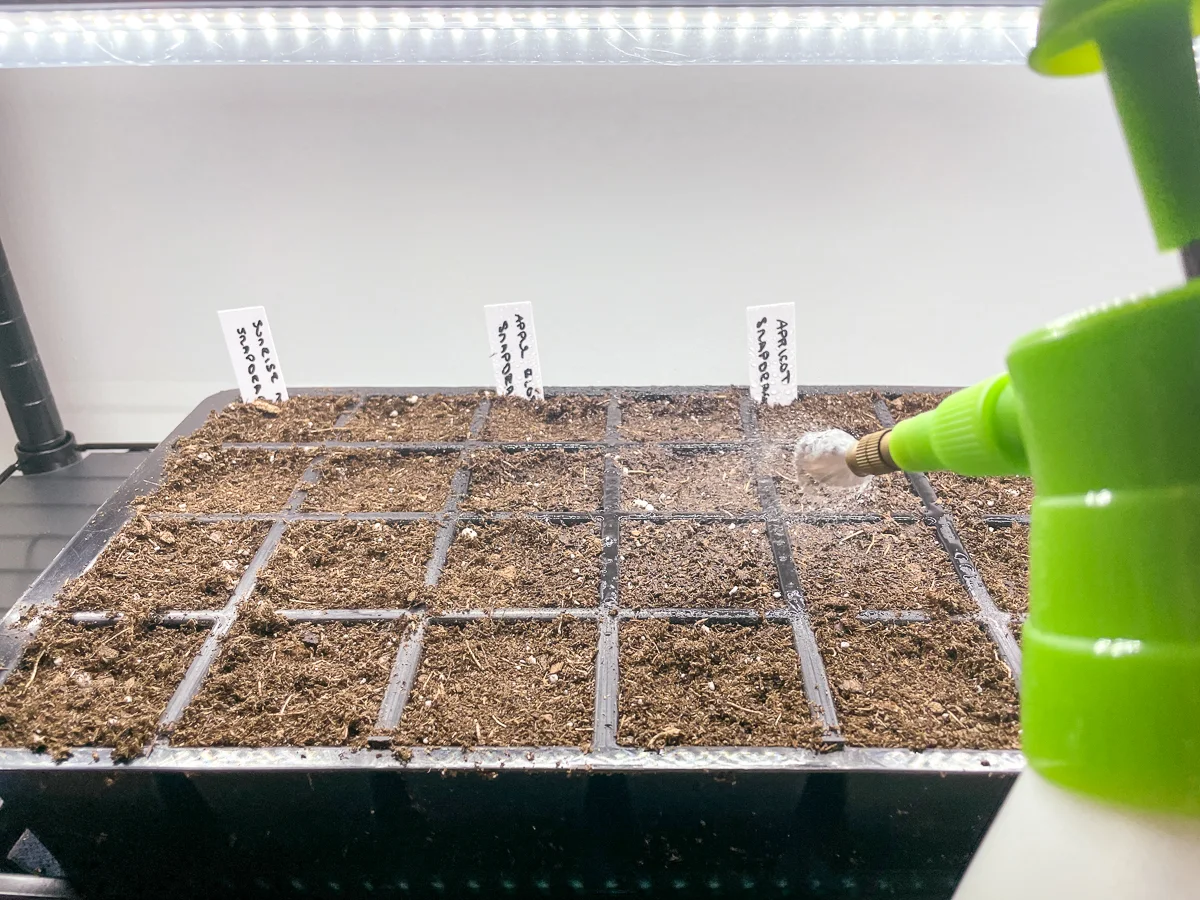
Put the flats in a spot with bright light such as a greenhouse or under grow lamps with 16 hours of light and 8 hours of darkness per day. Avoid germinating the seeds under incandescent lighting because it gets too hot.
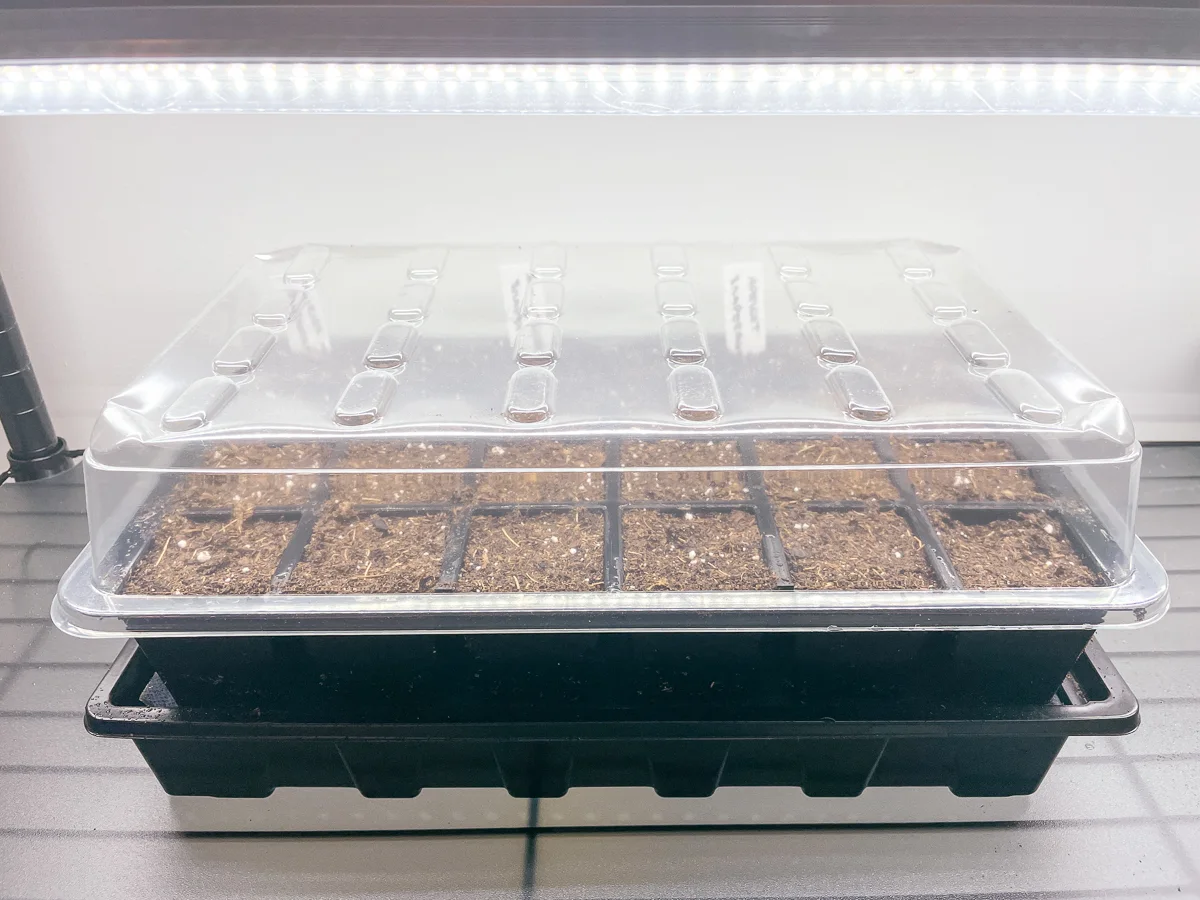
If all goes well, you should start to see sprouts popping out of the soil in 10 to 14 days. When the plants are 3-4 inches tall, pinch off the tips of the main stems. Doing this encourages more abundant flower-bearing side branches.
Keep a fan running nearby to encourage strong stems and prevent mold from growing on the damp soil. You don't want your seedlings to flop over in the garden at the first gust of wind, so a fan simulates the outdoor environment early in their growth cycle.
Pinching snapdragon seedlings
Once your seedlings grow to a height of 3-4 inches, it's time to pinch them back. Pinching snapdragon seedlings encourages side shoots that will produce more blooms! Check out my full tutorial on how to pinch snapdragons and propagate the cuttings for more information.

Planting snapdragons in the garden
Before you plant snapdragon seedlings outdoors:
- Choose a spot in full or part sun.
- Be sure the soil is rich in nutrients and organic matter.
- If the soil needs amendments, dig in several inches of good-quality compost or decomposed manure into the top 6 to 8 inches of the soil. You can also fertilize the ground with a slow-release 12-6-6 granular fertilizer and till it before planting.
Harden off your snapdragon seedlings for a week when temperatures are reliably above 50 degrees during the day before planting them in the garden. Bring the seed tray outside for a few hours a day at first, gradually increasing their time outdoors until they are acclimated to their new environment.

Space the seedlings 4-6 inches apart. If you pinched your seedlings, allow more space for the side branches between plants. Tall varieties might need staking or tying to a trellis to stay upright.
How to Care for Snapdragon Plants
Snapdragons do not compete well with other plants, so keep weeds pulled around the plants. In addition, deadheading spent flowers keeps bloom production going for longer.
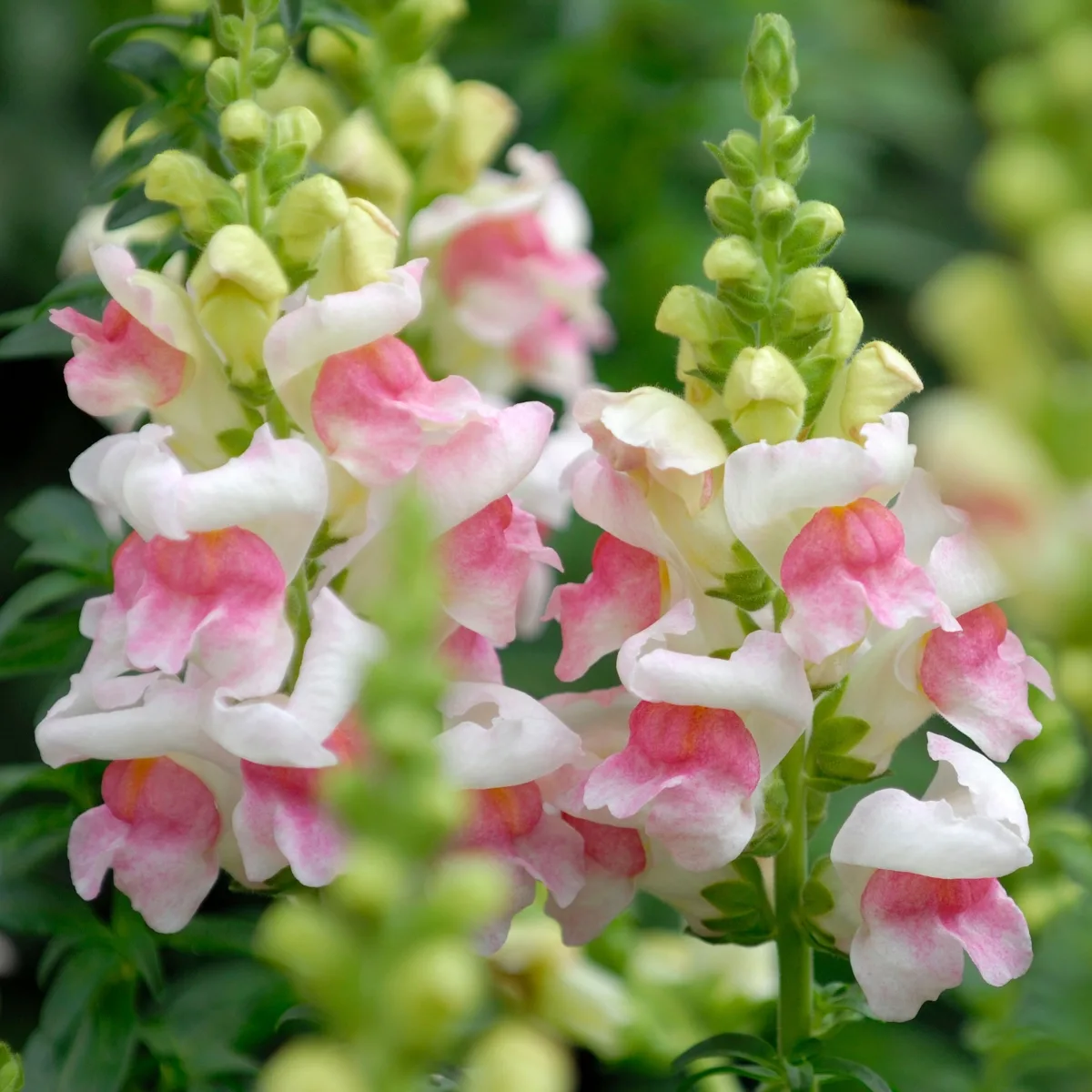
Snapdragons don’t mind cold weather, but frigid temperatures cause the plants to need additional water. Keep the plants watered during cold weather and dry spells during the growing season. Snapdragons need about 1 inch of water per week during spring and early summer. Avoid overhead water to keep the plants disease-free.
In severely cold weather, you should cover the plants with frost fabric or mulch to help them survive. Be sure to remove the cover or mulch when the weather warms.
Frequently Asked Questions about Snapdragons
In most growing zones, snapdragons are an annual. However, there are some varieties that can be grown as a short-lived perennial in warmer climates.
Snapdragons typically bloom in May or June, depending on your climate.
No, snapdragons are not poisonous or toxic to people or animals. In fact, the blooms are edible!

